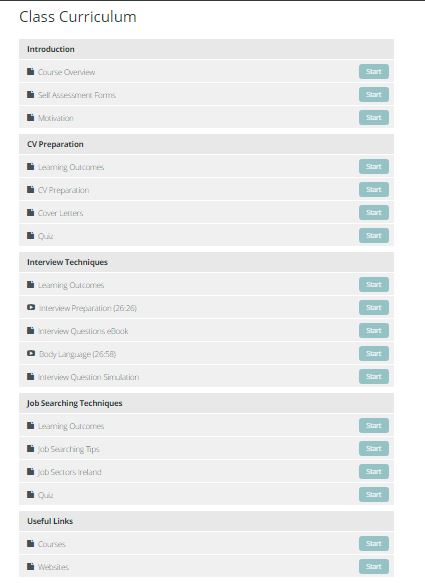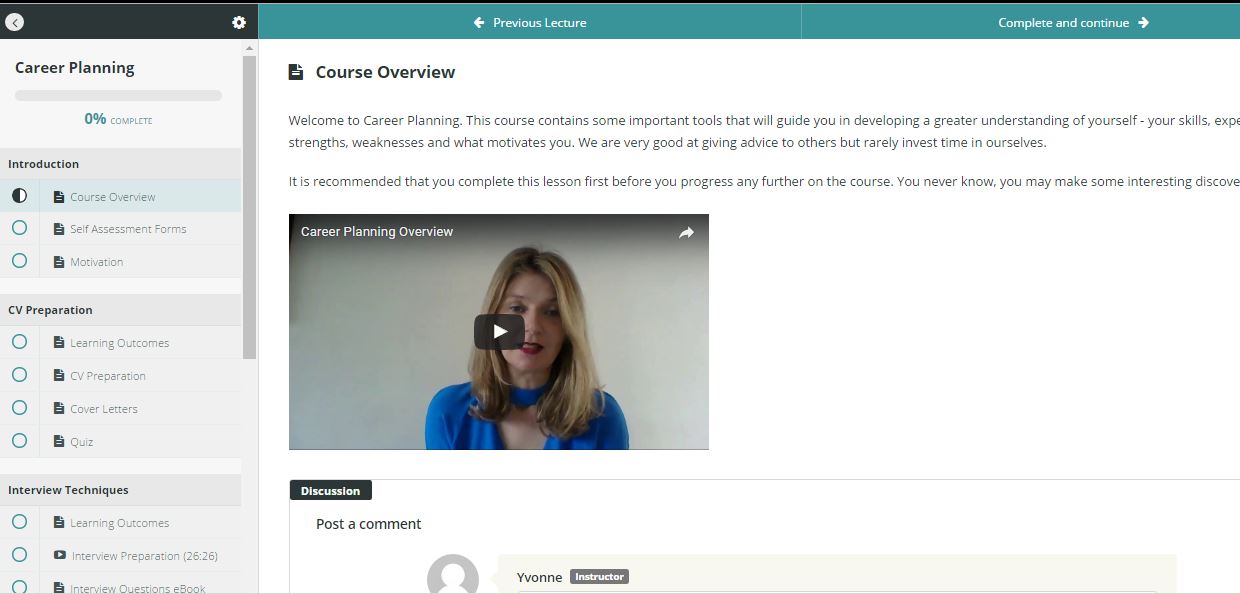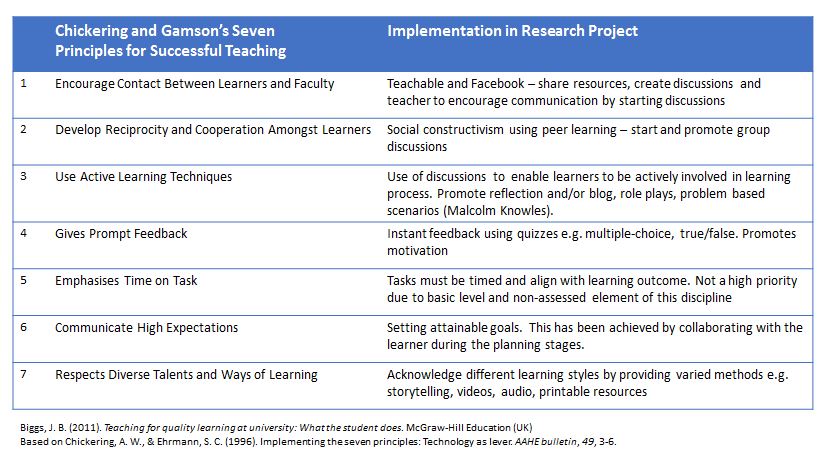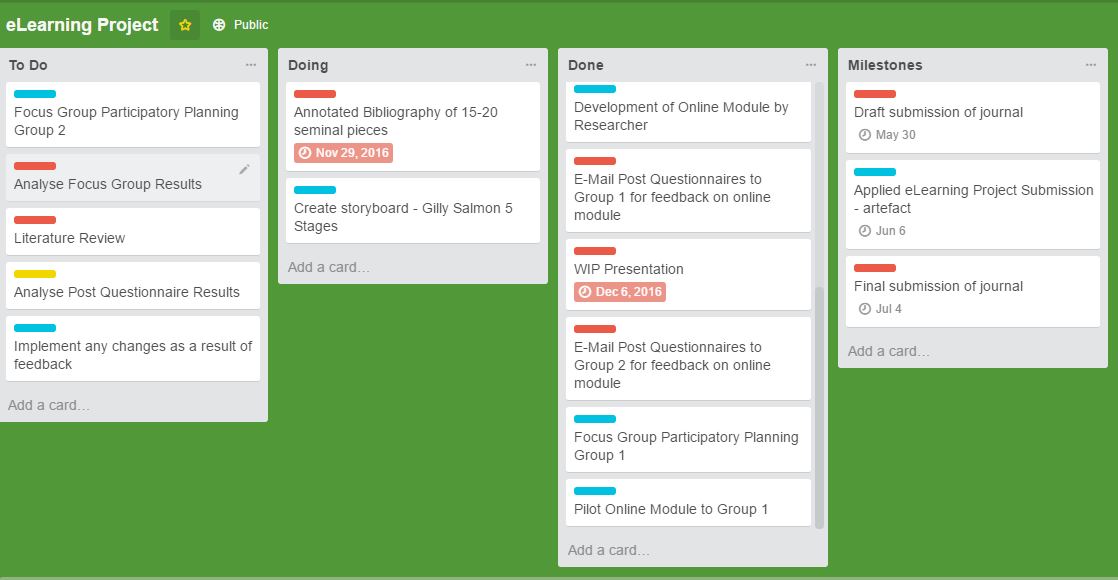
February is a short month but I managed to finalise the artefact and have sent the link and post questionnaire to the participants of Phase 1. Two have already replied and once I have received all replies I will triangulate the data. The two replies have showed positive feedback about the artefact and both agree that students should be involved in the process. However, they would still rather class or a mixture of both. This resonates with existing research where a blended approach is more preferential among students (XXXX). The following image is a link to the preview of the course – for assessment purposes I will set up a dummy login account.

At the request of the students I created a welcome video which gives a brief overview of the course and reassuring the presence of support throughout the course. The students felt that creating a video of a real person would put students more at ease. In the video I also mentioned that some live webinars and question and answer sessions would happen over Facebook. Social media was recommended by students during Phase 1 and I feel that integrating it will promote collaboration and peer review. Whilst I would not be an avid user of Facebook making an effort to connect with the learners in multiple ways is vital (Joosten, 2012).

I have started some discussions throughout the course to motivate learners to collaborate by asking them questions relevant to the course. Usually when a thread or discussion has been already started is it easier for the student to take part. The following is one example:

At the beginning of March the second phase will commence which will take considerably less time as the main work has been done. I have also managed to make a small (very small) start on my literature review and to formulate a plan for the structure of my journal. The literature review will begin with a historical context which will set the scope and range. I am considering the following as an approximate guideline for my word count of 8,000 words:
- Abstract 150 words
- Introduction 900 words
- Literature Review 2,500 words
- Methodology 1,000 words
- Findings & Discussion 2,550 words
- Conclusion 900 words
Theoretical Framework
Ensuring that the artefact is grounded in theory is fundamental and I have adopted Chickering and Gamson’s Seven Principles into the course. The following table outlines how this has been achieved. Furthermore, a scaffolding approach has also been adopted.

To Do List
Although my To Do List in Trello is getting smaller there is alot of work to do. Therefore, by the end of March I am hoping that Phase 2 will be complete and that I will have had a chance to triangulate the information. Furthermore, I am also hoping that the literature review will be almost complete enabling me time to work on the methodology and findings.

References:
Joosten, T. (2012). Social media for educators: Strategies and best practices. San Francisco, CA: Jossey-Bass.